Multi-User Nonlinear Optical Cryptosystem Based on Polar Decomposition and Fractional Vortex Speckle Patterns
Abstract
:1. Introduction
2. Theoretical Background and Methodology
2.1. Polar Decomposition (PD)
2.2. Generation of FOVS
2.3. Proposed Cryptosystem
- (a)
- First, the input plaintext, , is phase encoded as and modulated with a fractional optical vortex speckle (FOVS) phase mask.
- (b)
- Then, the real and imaginary parts of are separated, i.e., re{A′(x′, y′)} and imag{A′(x′, y′)}. The imaginary part, imag{A′(x′, y′)}, is reserved as the first private key and the real part, re{A′(x, y)}, is further processed using polar decomposition to obtain two more private keys as discussed in Section 2.1.
- (c)
- R(x′, y′) is then Fresnel propagated to a distance d2 to obtain the complex wavefront B(x″, y″) as follows:
- (d)
- This complex image is further modulated with the amplitude mask FOVS to obtain the final encrypted image, E(x″, y″), as follows:
3. Results
3.1. Encryption and Decryption Results
3.2. Key Sensitivity Analysis
3.3. Attack Analysis
3.3.1. Contamination Attacks
3.3.2. Known-Plaintext Attack
4. Conclusions
Author Contributions
Funding
Institutional Review Board Statement
Data Availability Statement
Conflicts of Interest
References
- Chen, W.; Javidi, B.; Chen, X. Advances in optical security systems. Adv. Opt. Photon. 2014, 6, 120–155. [Google Scholar] [CrossRef]
- Javidi, B.; Carnicer, A.; Yamaguchi, M.; Nomura, T.; Pérez-Cabré, E.; Millán, M.S.; Nishchal, N.K.; Torroba, R.; Fredy Barrera, J.; He, W.; et al. Roadmap on optical security. J. Opt. 2016, 18, 083001. [Google Scholar] [CrossRef]
- Refregier, P.; Javidi, B. Optical image encryption based on input plane and Fourier plane random encoding. Opt. Lett. 1995, 20, 767–769. [Google Scholar] [CrossRef] [PubMed]
- Unnikrishnan, G.; Joseph, J.; Singh, K. Optical encryption system that uses phase conjugation in a photorefractive crystal. Appl. Opt. 1998, 37, 8181–8186. [Google Scholar] [CrossRef]
- Unnikrishnan, G.; Joseph, J.; Singh, K. Optical encryption by double-random phase encoding in the fractional Fourier domain. Opt. Lett. 2000, 25, 887–889. [Google Scholar] [CrossRef] [PubMed]
- Situ, G.; Zhang, J. Double random-phase encoding in the Fresnel domain. Opt. Lett. 2004, 29, 1584–1586. [Google Scholar] [CrossRef] [PubMed]
- Li, X.; Zhao, D. Optical image encryption with simplified fractional Hartley transform. Chin. Phys. Lett. 2008, 25, 2477–2480. [Google Scholar]
- Hennelly, B.; Sheridan, J.T. Optical image encryption by random shifting in fractional Fourier domains. Opt. Lett. 2003, 28, 269–271. [Google Scholar] [CrossRef]
- Peng, X.; Zhang, P.; Wei, H.; Yu, B. Known-plaintext attack on optical encryption based on double random phase keys. Opt. Lett. 2006, 31, 1044–1046. [Google Scholar] [CrossRef] [PubMed]
- Peng, X.; Wei, H.; Zhang, P. Chosen-plaintext attack on lens less double-random phase encoding in the Fresnel domain. Opt. Lett. 2006, 31, 3261–3263. [Google Scholar] [CrossRef]
- Carnicer, A.; Montes-Usategui, M.; Arcos, S.; Juvells, I. Vulnerability to chosen-ciphertext attacks of optical encryption schemes based on double random phase keys. Opt. Lett. 2005, 30, 1644–1646. [Google Scholar] [CrossRef] [PubMed]
- Qin, W.; Peng, X. Asymmetric cryptosystem based on phase-truncated Fourier transforms. Opt. Lett. 2010, 35, 118–120. [Google Scholar] [CrossRef] [PubMed]
- Wang, X.; Zhao, D. A special attack on the asymmetric cryptosystem based on phase-truncated Fourier transforms. Opt. Commun. 2012, 285, 1078–1081. [Google Scholar] [CrossRef]
- Zhang, Y.; Wang, B. Optical image encryption based on interference. Opt. Lett. 2008, 33, 2443–2445. [Google Scholar] [CrossRef] [PubMed]
- Niu, C.H.; Wang, X.L.; Lv, N.G.; Zhou, Z.H.; Li, X.Y. An encryption method with multiple encrypted keys based on interference principle. Opt. Express 2010, 18, 7827–7834. [Google Scholar] [CrossRef] [PubMed]
- Kumar, R.; Bhaduri, B. Optical image encryption using Kronecker product and hybrid phase masks. Opt. Laser Technol. 2017, 95, 51–55. [Google Scholar] [CrossRef]
- Kumar, R.; Sheridan, J.T.; Bhaduri, B. Nonlinear double image encryption using 2D non-separable linear canonical transform and phase retrieval algorithm. Opt. Laser Technol. 2018, 107, 353–360. [Google Scholar] [CrossRef]
- Chen, W.; Chen, X.; Sheppard, C.J.R. Optical image encryption based on diffractive imaging. Opt. Lett. 2010, 35, 3817–3819. [Google Scholar] [CrossRef]
- Rajput, S.K.; Nishchal, N.K. Image encryption using polarized light encoding and amplitude and phase truncation in the Fresnel domain. Appl. Opt. 2013, 52, 4343–4352. [Google Scholar] [CrossRef]
- Li, H. Image encryption based on gyrator transform and two-step phase-shifting interferometry. Opt. Lasers Eng. 2009, 47, 45–50. [Google Scholar] [CrossRef]
- Nishchal, N.K.; Joseph, J.; Singh, K. Securing information using fractional Fourier transform in digital holography. Opt. Commun. 2004, 235, 253–359. [Google Scholar] [CrossRef]
- Wu, J.; Liu, W.; Liu, Z.; Liu, S. Cryptanalysis of an asymmetric optical cryptosystem based on coherent superposition and equal modulus decomposition. Appl. Opt. 2015, 54, 8921–8924. [Google Scholar] [CrossRef] [PubMed]
- Kumar, R.; Bhaduri, B.; Quan, C. Asymmetric optical image encryption using Kolmogorov phase screens and equal modulus decomposition. Opt. Eng. 2017, 56, 113109. [Google Scholar] [CrossRef]
- Abuturab, M.R. Asymmetric multiple information cryptosystem based on chaotic spiral phase mask and random spectrum decomposition. Opt. Laser Technol. 2018, 98, 298–308. [Google Scholar] [CrossRef]
- Chen, H.; Zhu, L.; Liu, Z.; Tanougast, C.; Liu, F.; Blondel, W. Optical single-channel color image asymmetric cryptosystem based on hyperchaotic system and random modulus decomposition in Gyrator domains. Opt. Lasers Eng. 2020, 124, 105809. [Google Scholar] [CrossRef]
- Kumar, R.; Bhaduri, B.; Nischal, N.K. Nonlinear QR code based optical image encryption using spiral phase transform, equal modulus decomposition and singular value decomposition. J. Opt. 2018, 20, 015701. [Google Scholar] [CrossRef]
- Chen, L.; He, B.; Chen, X.; Gao, X.; Liu, J. Optical image encryption based on multi-beam interference and common vector decomposition. Opt. Commun. 2016, 361, 6–12. [Google Scholar] [CrossRef]
- Kumar, R.; Quan, C. Asymmetric multi-user optical cryptosystem based on polar decomposition and Shearlet transform. Opt. Lasers Eng. 2019, 120, 118–126. [Google Scholar] [CrossRef]
- Sachin; Kumar, R.; Singh, P. Multiuser optical image authentication platform based on sparse constraint and polar decomposition in Fresnel domain. Phys. Scr. 2022, 47, 115101. [Google Scholar] [CrossRef]
- Cris, V.M.; Vardhan, H.; Prabhakar, S.; Kumar, R.; Reddy, S.G.; Choudhary, S.; Singh, R.P. An asymmetric optical cryptosystem using physically unclonable functions in the Fresnel domain. In Proceedings of the Holography Meets Advanced Manufacturing, University of Tartu, Tartu, Estonia, 20–22 February 2023; MDPI: Basel, Switzerland, 2023. [Google Scholar]
- Mosso, F.; Bolognini, N.; Pérez, D.G. Experimental optical encryption system based on a single-lens imaging architecture combined with a phase retrieval algorithm. J. Opt. 2015, 17, 065702. [Google Scholar] [CrossRef]
- Weng, D.; Zhu, N.; Wang, Y.; Xie, J.; Liu, J. Experimental verification of optical image encryption based on interference. Opt. Commun. 2011, 284, 2485–2487. [Google Scholar] [CrossRef]
- Li, J.; Shen, L.; Pan, Y.; Li, R. Optical image encryption and hiding based on a modified Mach-Zehnder interferometer. Opt. Express 2014, 22, 4849–4860. [Google Scholar] [CrossRef]
- Shen, X.; Dou, S.; Lei, M.; Chen, Y. Optical image encryption based on a joint Fresnel transform correlator with double optical wedges. Appl. Opt. 2016, 55, 8513–8522. [Google Scholar] [CrossRef] [PubMed]
- Zea, A.; Barrera, J.F.; Torroba, R. Experimental optical encryption of grayscale information. Appl. Opt. 2017, 56, 5883–5889. [Google Scholar] [CrossRef] [PubMed]
- Li, X.; Zhao, M.; Xing, Y.; Zhang, H.; Li, L.; Kim, S.; Zhou, X.; Wang, Q. Designing optical 3D images encryption and reconstruction using monospectral synthetic aperture integral imaging. Opt. Express 2018, 26, 11084–11099. [Google Scholar] [CrossRef]
- Rajput, S.K.; Matoba, O. Optical voice encryption based on digital holography. Opt. Lett. 2017, 42, 4619–4622. [Google Scholar] [CrossRef]
- Zhang, H.; Zeng, J.; Lu, X.; Wang, Z.; Zhao, C.; Cai, Y. Review on fractional vortex beam. Nanophotonics 2022, 11, 241–273. [Google Scholar] [CrossRef]
- Zeng, J.; Liu, X.; Wang, F.; Zhao, C.; Cai, Y. Partially coherent fractional vortex beam. Opt. Express 2018, 26, 26830–26844. [Google Scholar] [CrossRef]
- Kotlyar, V.V.; Kovalev, A.A.; Nalimov, A.G. Topological Charge of Optical Vortices, 1st ed.; CRC Press: Boca Raton, FL, USA, 2022. [Google Scholar]
- Shikder, A.; Nishchal, N.K. Measurement of the fractional charge of an optical vortex beam through interference fringe location. Appl. Opt. 2023, 62, D58–D67. [Google Scholar] [CrossRef]
- Higham, N.J. Computing the polar decomposition—With applications. SIAM J. Sci. Stat. Comput. 1986, 7, 1160–1174. [Google Scholar] [CrossRef]
- Oussama, N.; Assia, B.; Lemnouar, N. Secure image encryption scheme based on polar decomposition and chaotic map. Int. J. Inform. Commun. Technol. 2017, 10, 437–453. [Google Scholar] [CrossRef]
- Reddy, S.G.; Prabhakar, S.; Kumar, A.; Banerji, J.; Singh, R.P. Higher order optical vortices and formation of speckles. Opt. Lett. 2014, 39, 4364–4367. [Google Scholar] [CrossRef] [PubMed]

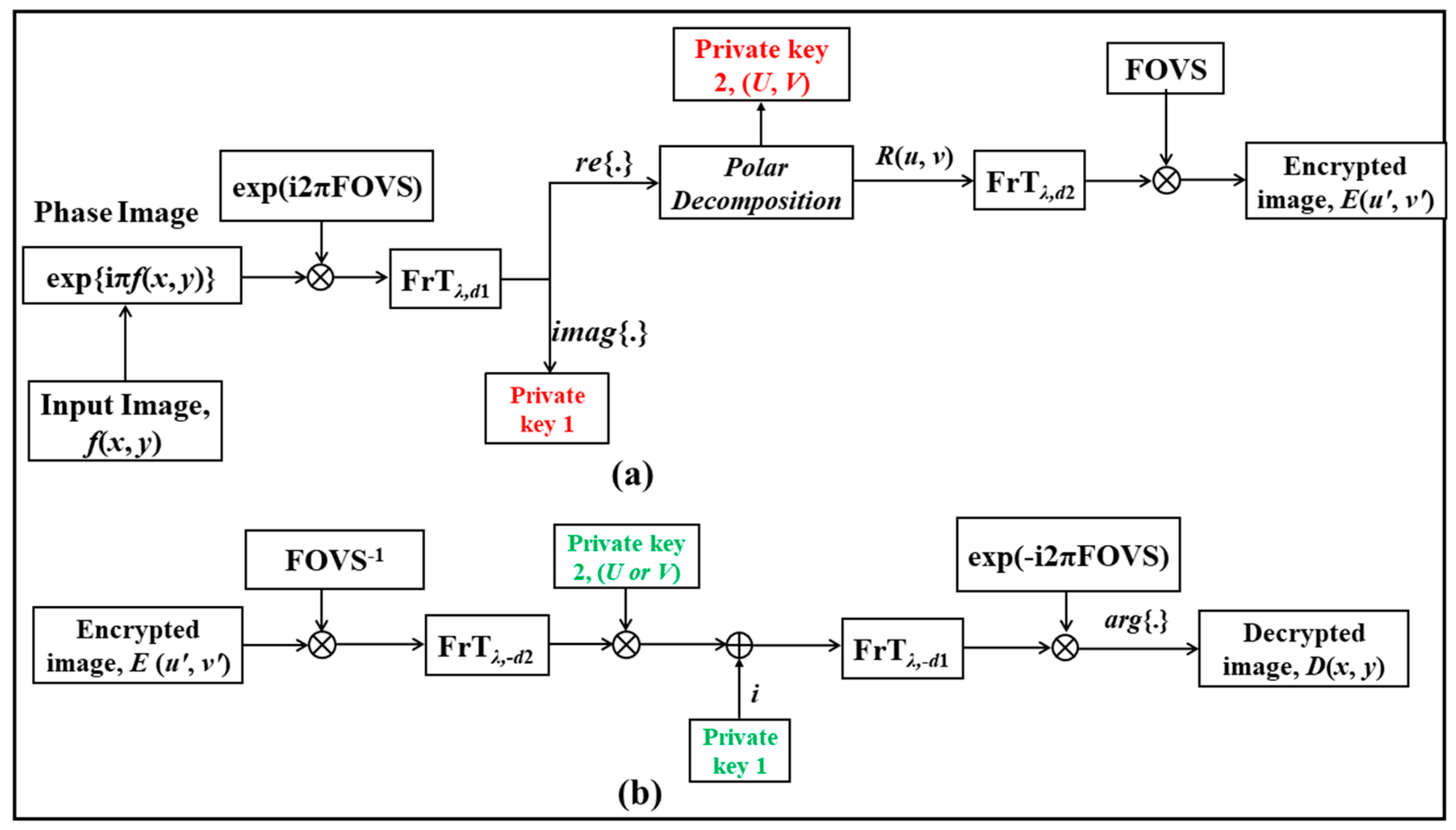
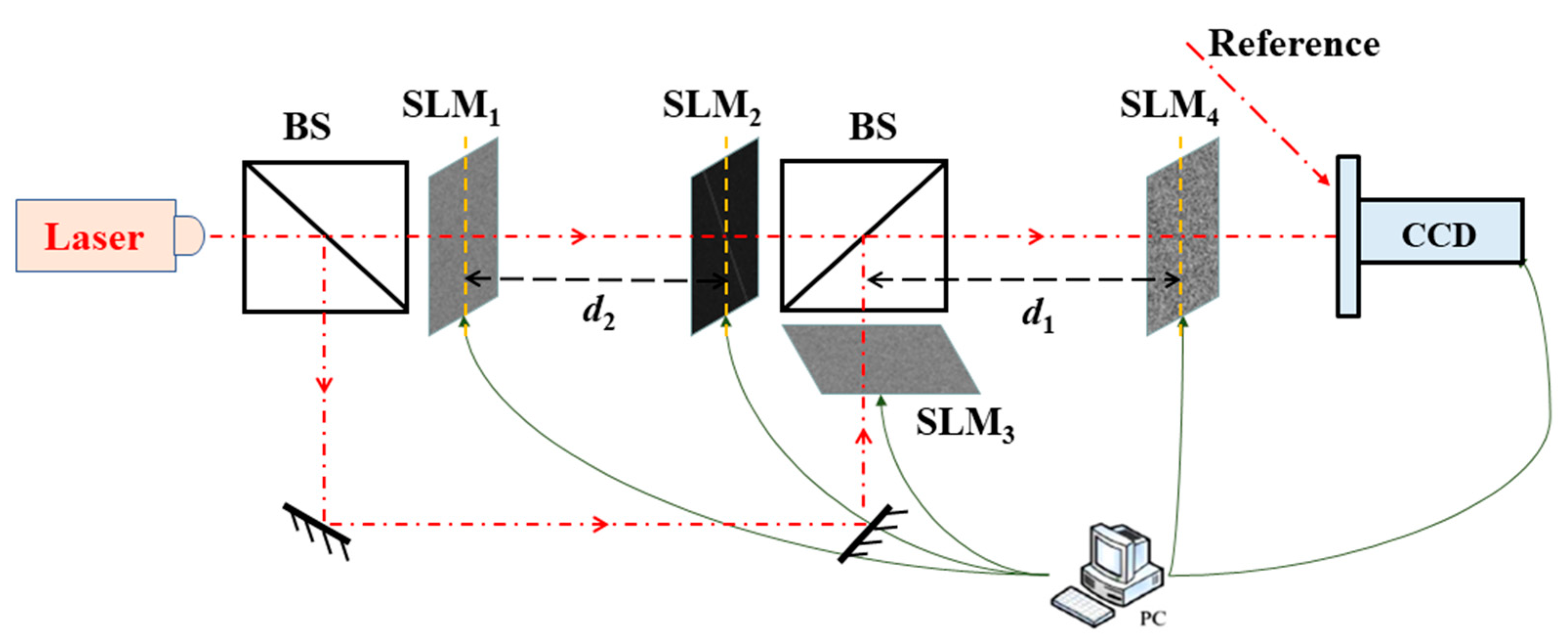
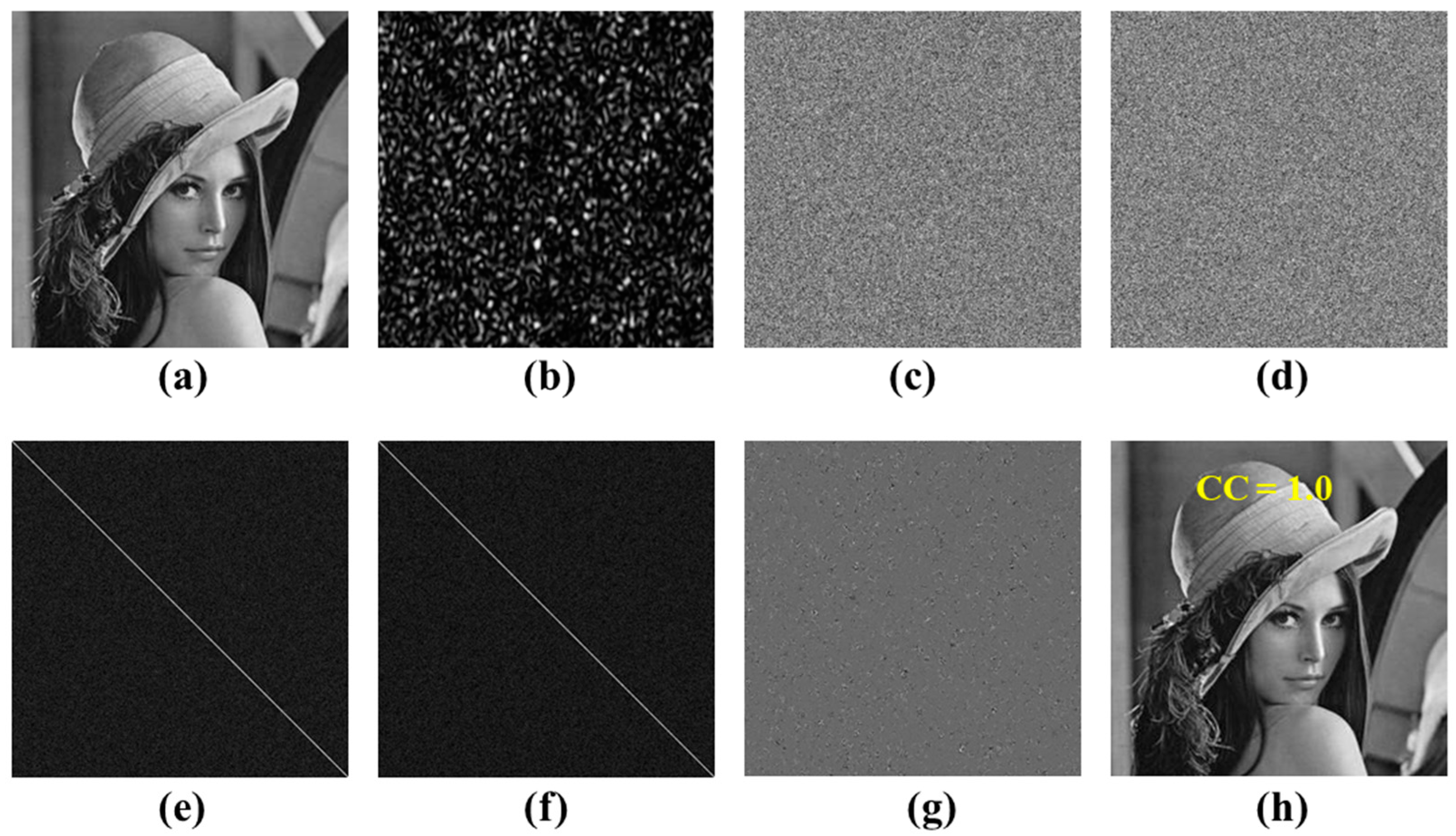
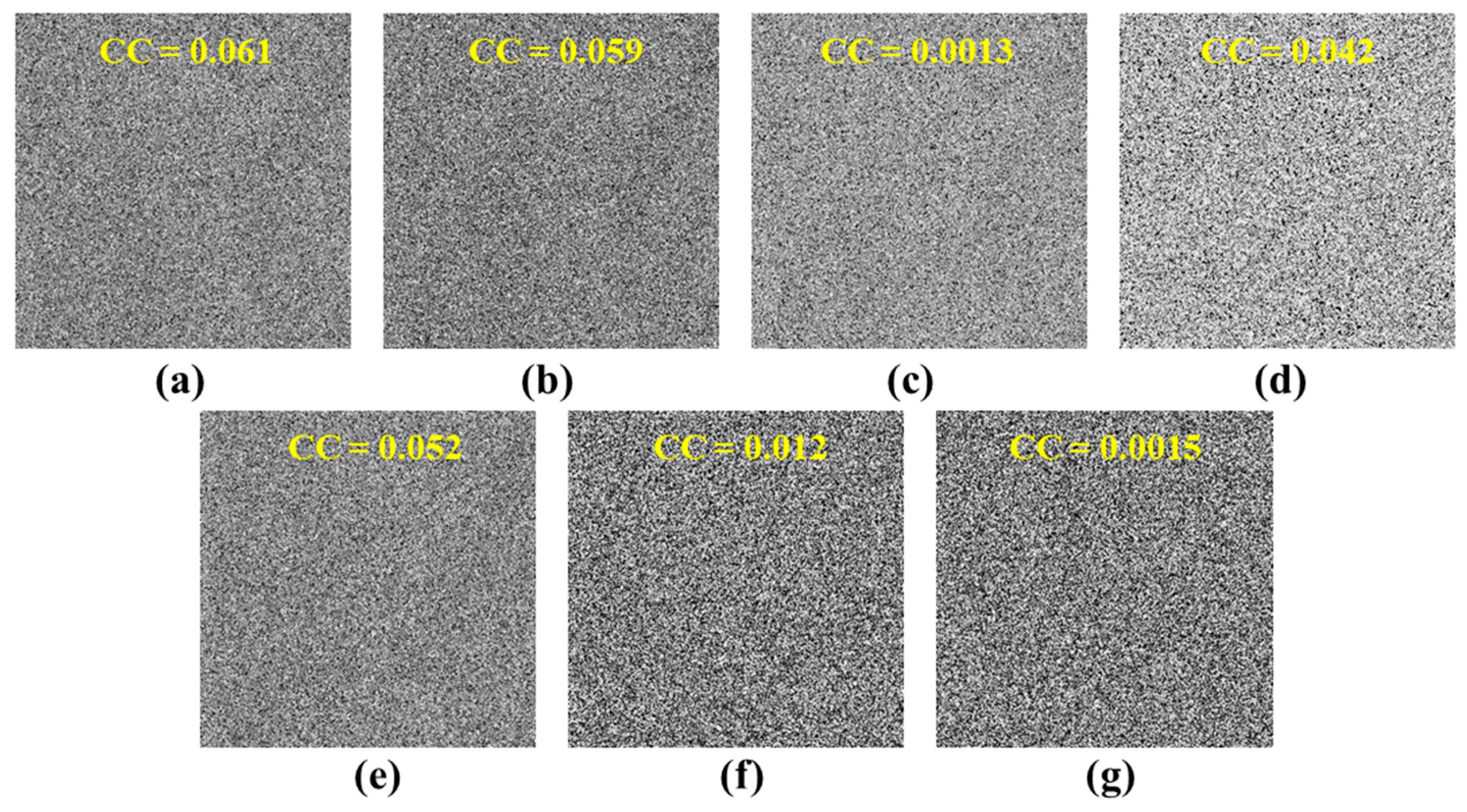
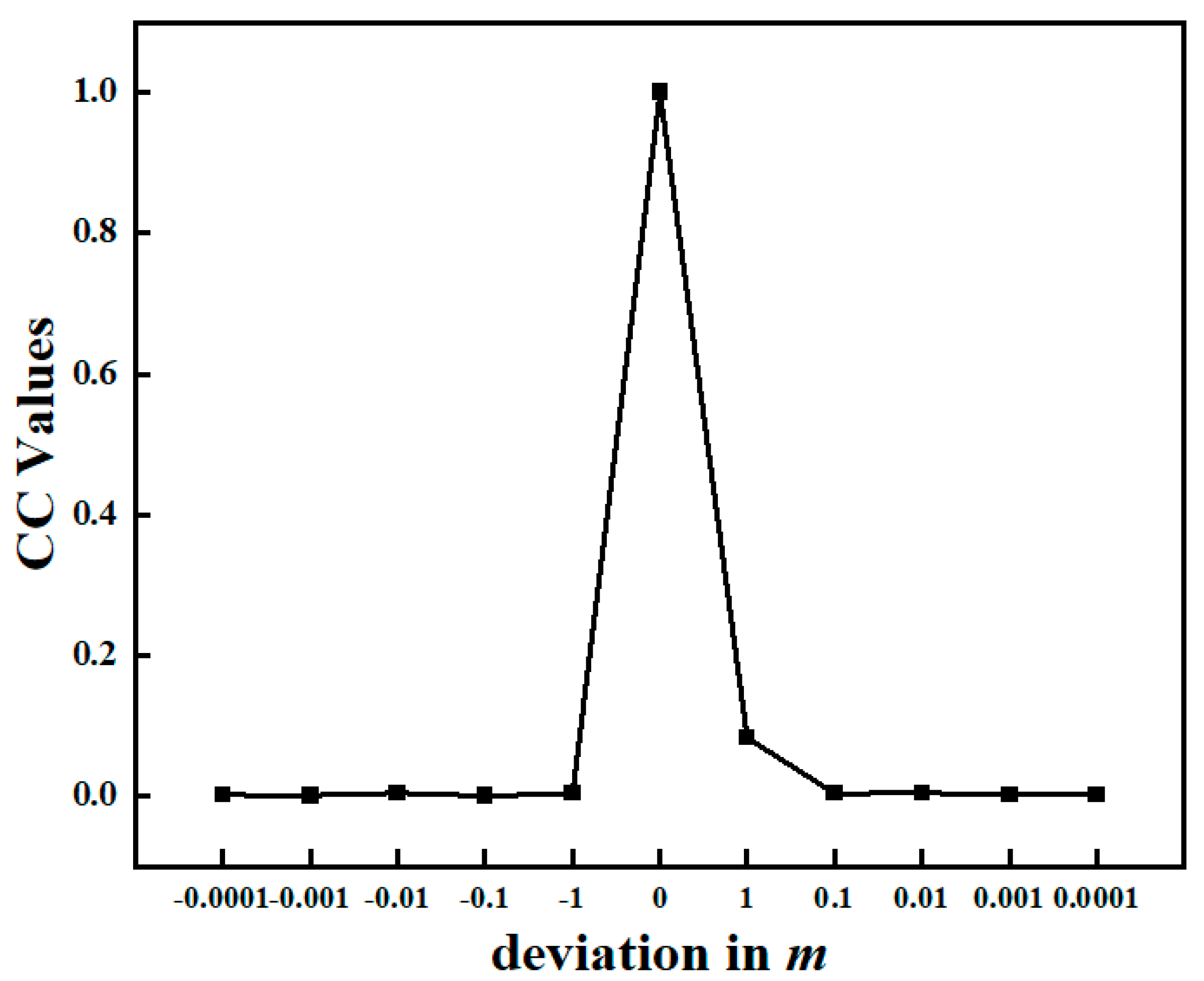
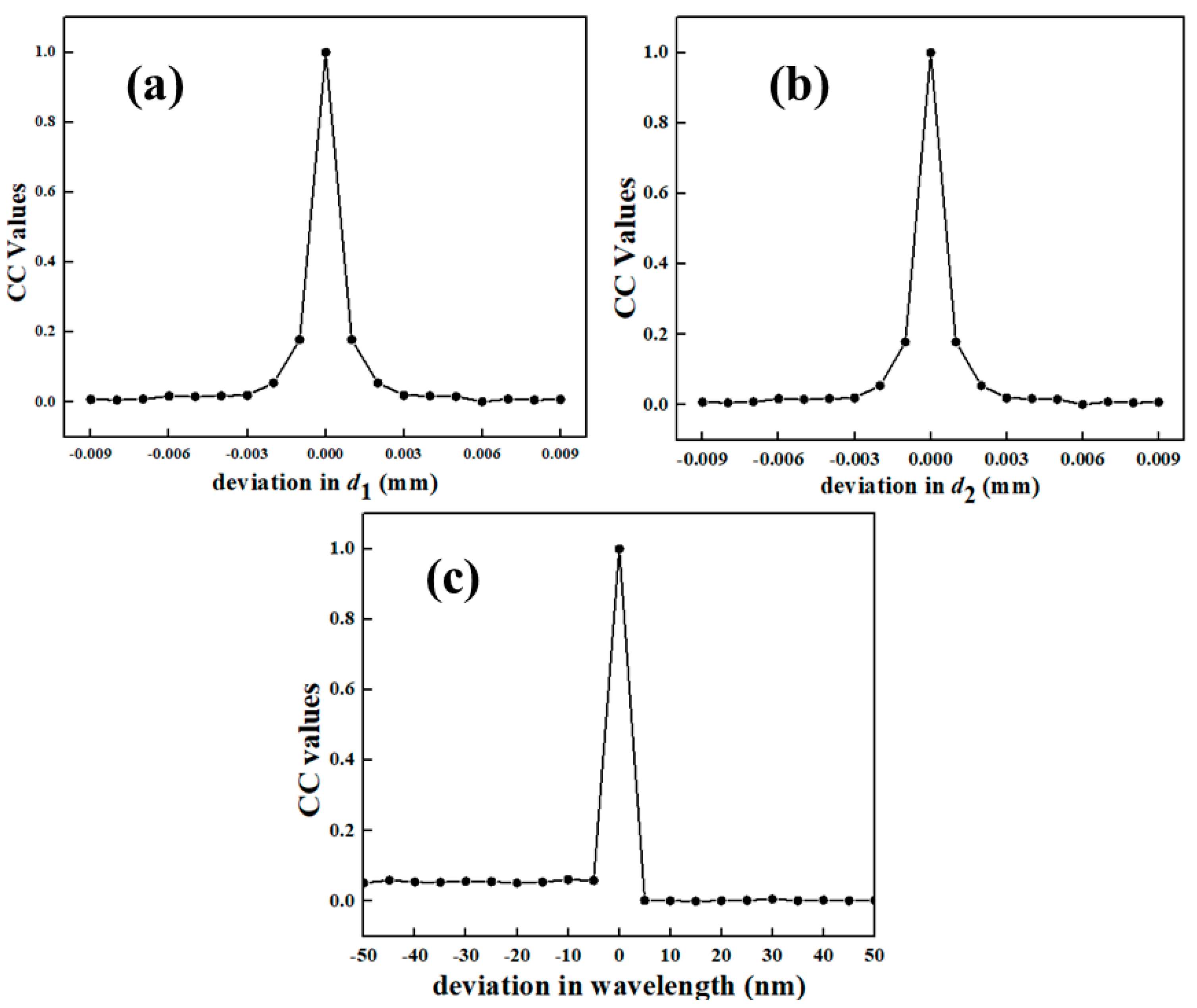


Disclaimer/Publisher’s Note: The statements, opinions and data contained in all publications are solely those of the individual author(s) and contributor(s) and not of MDPI and/or the editor(s). MDPI and/or the editor(s) disclaim responsibility for any injury to people or property resulting from any ideas, methods, instructions or products referred to in the content. |
© 2023 by the authors. Licensee MDPI, Basel, Switzerland. This article is an open access article distributed under the terms and conditions of the Creative Commons Attribution (CC BY) license (https://creativecommons.org/licenses/by/4.0/).
Share and Cite
Mandapati, V.C.; Vardhan, H.; Prabhakar, S.; Sakshi; Kumar, R.; Reddy, S.G.; Singh, R.P.; Singh, K. Multi-User Nonlinear Optical Cryptosystem Based on Polar Decomposition and Fractional Vortex Speckle Patterns. Photonics 2023, 10, 561. https://doi.org/10.3390/photonics10050561
Mandapati VC, Vardhan H, Prabhakar S, Sakshi, Kumar R, Reddy SG, Singh RP, Singh K. Multi-User Nonlinear Optical Cryptosystem Based on Polar Decomposition and Fractional Vortex Speckle Patterns. Photonics. 2023; 10(5):561. https://doi.org/10.3390/photonics10050561
Chicago/Turabian StyleMandapati, Vinny Cris, Harsh Vardhan, Shashi Prabhakar, Sakshi, Ravi Kumar, Salla Gangi Reddy, Ravindra P. Singh, and Kehar Singh. 2023. "Multi-User Nonlinear Optical Cryptosystem Based on Polar Decomposition and Fractional Vortex Speckle Patterns" Photonics 10, no. 5: 561. https://doi.org/10.3390/photonics10050561





